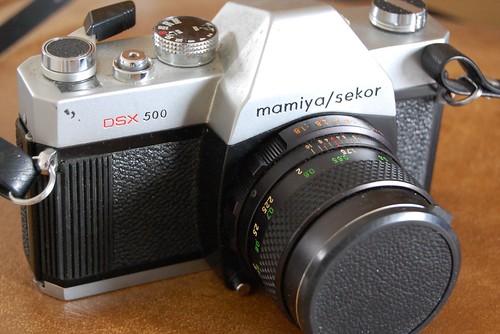Difference between revisions of "Mamiya DSX 500"
Hanskerensky (talk | contribs) m (Changed rights image mhaithaca/3354217848 from wp to nc after checking flickr image) |
Hanskerensky (talk | contribs) m (→Link: Repaired Link URL) |
||
| Line 12: | Line 12: | ||
== Link == | == Link == | ||
* [http://www.butkus.org/chinon/mamiya/mamiya_dsx_1000_dsx_500/mamiya_dsx_1000_500.htm DSX 500 and DSX 1000 manual] from Mike Butkus' [http://www.butkus.org/chinon OrphanCameras.com] | * [http://www.butkus.org/chinon/mamiya/mamiya_dsx_1000_dsx_500/mamiya_dsx_1000_500.htm DSX 500 and DSX 1000 manual] from Mike Butkus' [http://www.butkus.org/chinon OrphanCameras.com] | ||
| − | * [http:// | + | * [http://www.herron.50megs.com/sx.htm Mamiya MSX and DSX], at [http://www.herron.50megs.com/ Ron Herron's "Collecting Mamiya 35mm Cameras"] |
[[Category: Japanese 35mm SLR]] | [[Category: Japanese 35mm SLR]] | ||
Revision as of 10:38, 27 May 2016

|
| Mamiya/Sekor DSX 500 image by Mark H. Anbinder (Image rights) |
The Mamiya DSX came in two models, the DSX 500 and the DSX 1000. Both offered a choice of TTL averaging or spot metering, selected with an A/S switch alongside the lens mount. The numerical model designation referred to the fastest shutter speed offered by each; and the DSX 500 also lacks the self-timer found on the DSX 1000
The related MSX 500 and MSX 1000 were similar cameras, but only offering the spot-metering option. All these models used the SX series of Mamiya 42mm screw lenses. SX-series Mamiya lenses have a lens mount lock (unlike previous Mamiya threaded lenses) and a mechanical pin which transmits the f-stop information to the camera, eliminating the need to stop down for metering.